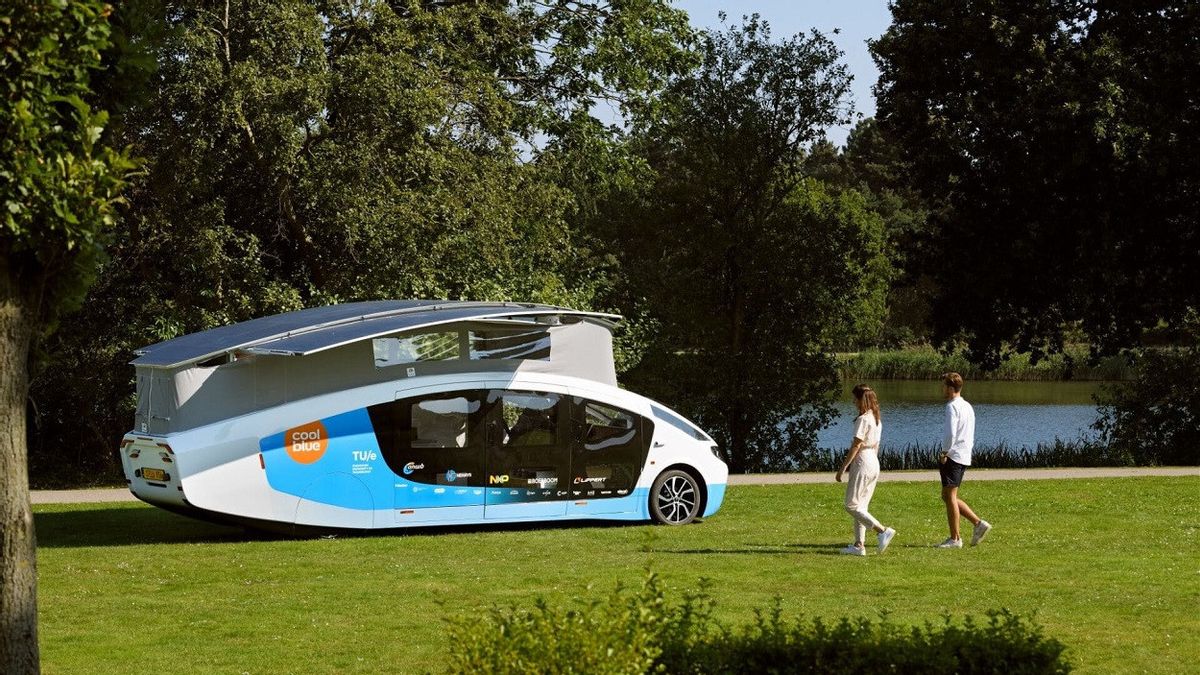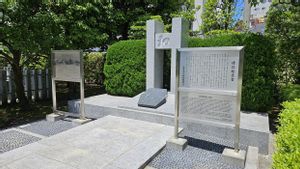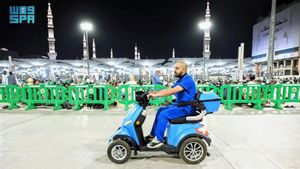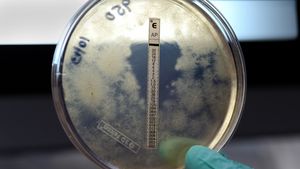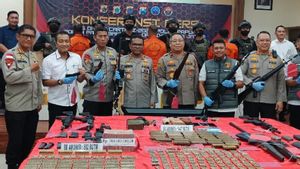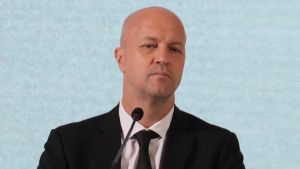JAKARTA - Traveling along European highways, a campervan named "Stella Vita" has driven nearly 2,000 kilometers (1,242 miles) without stopping to refuel or plug in.
Described as a "self-contained house on wheels," the campervan or caravan has solar panels mounted on its roof, so it is powered by solar energy alone.
This campervan is equipped with living necessities including a double bed, sofa, kitchen area and bathroom with shower, washbasin and toilet. It can fit two people, who can drive, cook breakfast and watch television using only the vehicle's solar-powered battery, according to its creators, 22 students at the Eindhoven University of Technology in the Netherlands.
"The ultimate goal is to really inspire people and markets and communities to accelerate the transition to a more sustainable future," said Tijn Ter Horst, 21, a member of the Solar Team Eindhoven 2021, which builds the vehicle, with sponsorship funding, citing CNN. October 19.
"What we're trying to do is show people and show companies what's already possible."
The team started brainstorming for the project last September and they came up with the idea for the Stella Vita within two months. From November 2020 to March this year, they designed the campervan, aiming to make it as aerodynamic and lightweight as possible while still looking good.

By July, they had finished building it and started testing the vehicle on the road. The caravan was licensed for use on public roads in early September and began its European tour later that month.
After starting in Eindhoven, the team ended their journey in Tarifa, Spain's southernmost tip, on October 15, covering a journey of 3,000 kilometers (1,860 miles).
Technical problems at the start of the tour meant that the campervan had to be transported initially by trailer. However, once completed, it was able to cover nearly 2,000 kilometers.
"This is a car that looks so special that when you drive, for example, Paris or any other city, everyone there is waving, taking photos," Horst said.
"It's great to see what we've accomplished in one year and we're looking forward to inspiring even more people."
The vehicle can typically travel up to 600 kilometers (373 miles) on its 60 kWh battery when fully charged, even at night and on cloudy days.
Meanwhile, on a day when the sun shines, its range increases by 130 kilometers (81 miles). The team drove about 300 kilometers (186 miles) between each destination, with a top speed of 120 kilometers (75 miles) per hour.
When parked, the extendable roof can rise to allow passengers to stand, and additional solar panels slide out from the sides, doubling the solar surface from 8.8 square meters to 17.5 square meters. When stationary, passengers can also track their energy consumption using the built-in infotainment system.
"It creates energy awareness. You can see how much energy comes in from the sun, how much energy is in your battery and then it tells you, for example if you want to make pancakes, how much energy is needed to make pancakes," he explained.

To note, this is not the first solar-powered vehicle made by the university. Solar Team Eindhoven 2013 made what it calls the world's first solar-powered family car, and the student team has been building a new family car every two years since.
This year's team decided, "it's time to take the next step in mobility" by creating a vehicle that allows people to live on solar energy, not just drive it, Horst said.
"Earlier solar cars the team built produced so much energy that they could even power other electric vehicles. So that's why we came up with the idea, okay, what are we going to do with that extra energy?" he added.
Five Solar Team Eindhoven alumni successfully founded Lightyear in 2016, a company that commercially produces family solar cars. Horst wants Stella Vita to also push the market forward, adding, "I think there's a lot the full mobility sector can adopt and use. We'll try to continue our mission when we get back home."
The English, Chinese, Japanese, Arabic, and French versions are automatically generated by the AI. So there may still be inaccuracies in translating, please always see Indonesian as our main language. (system supported by DigitalSiber.id)
